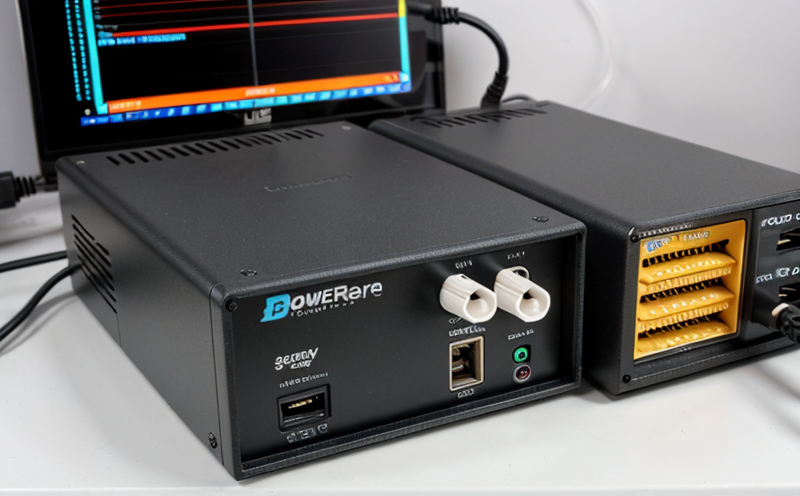IEC 60950 Safety Testing for Power Supply Units
The IEC (International Electrotechnical Commission) standard IEC 60950-1:2018 is a comprehensive guide for the safety requirements of household and similar uses of electrical equipment. When it comes to power supply units, this standard ensures that these components meet stringent safety criteria to protect users from hazards such as electric shock, fire, or thermal runaway.
IEC 60950-1 is widely recognized in the electronics industry for its rigorous approach to ensuring product safety. Compliance with this standard helps manufacturers demonstrate adherence to international safety regulations and avoid potential recalls or market bans. For quality managers, compliance officers, R&D engineers, and procurement teams involved in the development and testing of power supply units (PSUs), understanding these requirements is crucial.
The PSU forms a critical part of any electronic device, providing stable voltage and current to ensure that other components operate correctly. However, PSUs can pose significant safety risks if not designed or tested properly. IEC 60950-1 focuses on several key areas:
- Electrical insulation
- Fault protection mechanisms (such as short-circuit and overcurrent protection)
- Electromagnetic compatibility (EMC) considerations to prevent interference with other devices
- User safety features like door interlocks and childproofing
- Thermal management to prevent overheating which could lead to fire hazards
- Mechanical stability and durability under various environmental conditions
The testing process for IEC 60950-1 involves multiple stages, including visual inspections, electrical tests, mechanical stress tests, and sometimes even thermal cycling. The specific tests vary based on the intended use of the PSU (e.g., desktop computers vs. industrial applications), but some common procedures include:
- Insulation resistance measurement
- Withstand voltage test to check for insulation integrity under high voltages
- Overcurrent protection testing
- Ground continuity and bond resistance checks
- Electromagnetic interference (EMI) emission and susceptibility tests
- Thermal cycling to ensure stability over temperature variations
The aim of these tests is not only to identify potential hazards but also to ensure that the PSU operates reliably under expected conditions. For manufacturers, compliance with IEC 60950-1 is a vital step in ensuring their products are safe and meet global market demands.
For R&D engineers involved in product design, understanding these safety standards helps guide development processes early on, avoiding costly redesigns later. Quality managers can ensure consistent quality across production batches by referencing the standard during manufacturing processes. Compliance officers play a crucial role in ensuring that new products are tested and certified before they reach the market.
Let's delve deeper into why compliance with IEC 60950-1 is essential for power supply units:
- Avoids legal issues: Non-compliance can lead to product recalls, fines, or even bans from certain markets, impacting business operations significantly.
- Enhances brand reputation: Demonstrating adherence to international safety standards builds trust with customers and stakeholders.
- Facilitates market access: Many countries have regulations requiring compliance with IEC 60950-1 for certain types of electronic devices, ensuring easier entry into these markets.
- Promotes product longevity: Proper safety testing ensures that the PSU can withstand environmental stresses and operational demands without compromising user safety.
In summary, IEC 60950-1 is a cornerstone of power supply unit safety. Its detailed requirements ensure that these components are not only functional but also safe for end-users. Compliance with this standard is essential for any organization involved in the design, manufacture, or sale of electronic equipment.
Benefits
Compliance with IEC 60950-1 offers numerous benefits that extend beyond mere regulatory requirements. These advantages are particularly valuable for manufacturers, quality managers, and R&D engineers:
- Enhanced Product Safety: Ensures that power supply units meet stringent safety criteria, reducing the risk of accidents or injuries.
- Better Market Access: Compliance facilitates easier entry into international markets where these standards are mandatory for certain types of electronic devices.
- Increased Brand Trust: Demonstrating adherence to global safety standards builds trust with customers and stakeholders, enhancing brand reputation.
- Cost Efficiency: Early identification of potential issues through rigorous testing can save costs associated with post-market recalls or redesigns.
- Regulatory Compliance: Avoids legal penalties and market bans by ensuring that products meet international safety regulations.
- Improved Product Quality: The stringent testing procedures help identify and eliminate flaws, leading to higher product reliability and durability.
- Promotion of Sustainable Practices: Ensuring product safety also contributes to sustainable practices by minimizing waste from defective units that might otherwise end up in landfills.
By implementing IEC 60950-1 testing, organizations can maximize these benefits and position themselves as leaders in the electronics industry. This standard not only ensures compliance with international regulations but also sets a benchmark for excellence in product safety.
Industry Applications
The IEC 60950-1 testing is applicable across various industries where power supply units are integral components. These include:
- Consumer Electronics: Devices like televisions, home entertainment systems, and gaming consoles.
- Computing & IT: Servers, desktop computers, laptops, and peripherals used in data centers and office environments.
- Medical Equipment: Diagnostic imaging machines, patient monitoring devices, and other healthcare appliances that require reliable power sources.
- Industrial Automation: Manufacturing equipment, robotics systems, and control panels that operate continuously without interruption.
- Smart Home Appliances: Smart thermostats, security cameras, and home automation systems that rely on stable electrical supplies.
- Consumer Devices: Portable electronics such as smartphones, tablets, and wearables that demand efficient power management to extend battery life.
In each of these sectors, the reliability and safety of the PSU are paramount. By ensuring compliance with IEC 60950-1, manufacturers can guarantee that their products meet the highest standards in terms of safety and performance.





